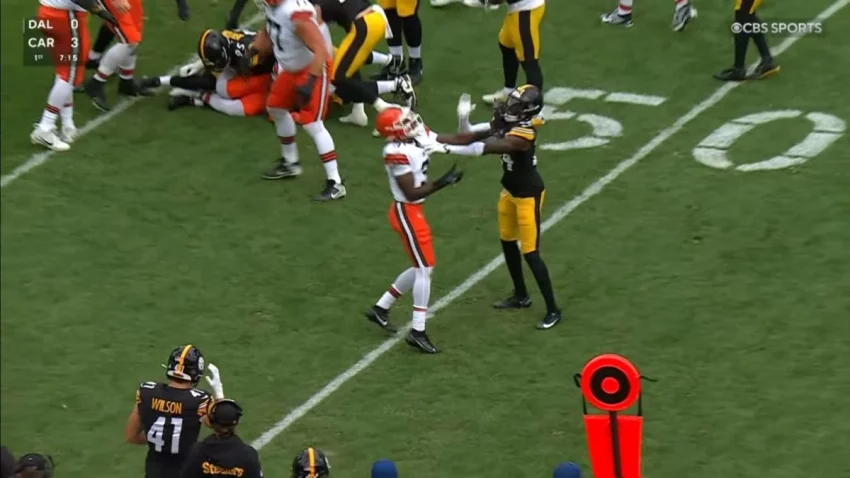In the NFL, unnecessary roughness is a personal foul that penalizes players for using excessive or avoidable physical contact. The rule exists to maintain fairness and protect players from dangerous hits or behavior that goes beyond the normal scope of a play.
Definition and Purpose
Unnecessary roughness occurs when a player delivers excessive or violent contact that isn’t needed to complete a football play. The rule aims to promote player safety, especially as the league continues to focus on reducing concussions and high-impact collisions.
Common examples include:
- Hitting an opponent after the whistle or when they are out of bounds
- Striking the head or neck area of a defenseless player such as a quarterback or receiver
- Spearing with the helmet or leading with the crown
- Throwing or slamming an opponent to the ground unnecessarily
Penalty for Unnecessary Roughness
When unnecessary roughness is called, the referee enforces a 15-yard penalty from the spot of the foul or the end of the play. If the foul is committed by the defense, it results in an automatic first down.
In severe or repeated cases, players may also face fines or even ejection from the game.
Examples from Real Games
- A linebacker tackles a quarterback after the pass has been released
- A defensive back launches into a receiver’s helmet during a catch
- A player hits or taunts an opponent who is already on the ground or out of bounds
These types of fouls often draw attention from fans and commentators, especially when they occur in crucial game moments.
Why the Rule Matters
Unnecessary roughness is one of the NFL’s most enforced rules because it protects athletes from preventable injuries. By discouraging late hits and high contact, the rule helps maintain sportsmanship, player longevity, and game integrity.
Key Takeaways
- Type of foul: Personal foul
- Penalty: 15 yards, automatic first down (if on defense)
- Focus: Prevents excessive or dangerous contact
- Goal: Player safety and fair competition

